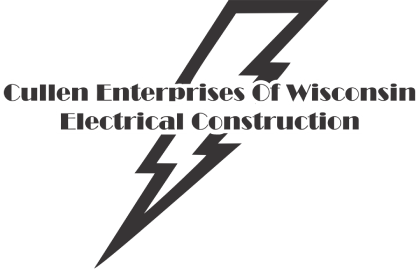Everything you need to know about installing solar panels on your commercial building
With businesses increasingly prioritizing sustainability and cost savings, solar energy has emerged as a groundbreaking solution for commercial properties. The popularity of solar technology in the business sector reflects both environmental consciousness and smart financial planning.
At Cullen Enterprises of Wisconsin, we have over 20 years of experience serving the electrical industry. In this guide, we’ll walk business owners through the process of implementing solar energy systems in their commercial spaces, from initial consideration to final installation.
Understanding the Costs
The transition to solar energy requires dedicated planning and consideration of different cost factors. The initial investment encompasses equipment, labor, permits, and related expenses, with costs varying based on installation size, energy requirements, location, and system type. While the upfront investment may seem intimidating, the long-term financial outlook is often favored over traditional energy sources.
Business owners can expect to see their investment returned within a clearly defined timeline. There are many financing options available to suit different business models and financial situations. Understanding these options, from traditional loans to specialized solar financing programs, enables businesses to make informed financial decisions.
Calculating the Savings
Solar panels can dramatically reduce costs through lower energy bills, making them ideal for cost-conscious businesses. Commercial spaces typically see large reductions in their energy expenses, with some achieving complete energy independence. Through net metering programs, businesses can sell excess energy back to the grid, creating an additional revenue stream while contributing to the broader energy infrastructure.
The long-term financial benefits of solar energy extend beyond immediate savings. Solar installations help stabilize energy costs for decades, protecting businesses from market volatility and rising utility rates. Additionally, commercial properties equipped with solar systems often see an increase in property value.
Timeline for Installation
The solar panel installation process follows a structured timeline that begins with detailed planning and preparation. During the initial consultation, our experts will evaluate the property’s solar potential and energy needs. This is followed by extensive system design and engineering phases, guaranteeing that the installation will meet specific business requirements while complying with all regulatory standards.
The actual installation phase varies in duration depending on system size and complexity. Following installation, thorough testing and inspection procedures ensure system safety and performance. The final phase involves grid connection and system activation, marking the beginning of the business’s solar energy generation.
Tax Incentives and Rebates
There are substantial financial incentives available to businesses investing in solar energy. The federal Investment Tax Credit (ITC) offers savings on commercial solar installations, while state and local governments often provide additional tax credits or rebates. Many utility companies also offer incentive programs to encourage commercial solar adoption.
A particularly valuable benefit for businesses is the Modified Accelerated Cost Recovery System (MACRS), which allows for accelerated depreciation of solar investments. Utilizing these various incentives can dramatically lower the overall cost of solar power.
Sustainable Energy and Environmental Impact
Commercial solar installations significantly reduce carbon footprints and support global environmental initiatives. This commitment to renewable energy aligns perfectly with corporate social responsibility (CSR) goals, showcasing leadership in environmental stewardship while providing tangible benefits for both the company and community.
Enhancing Brand Reputation
Solar adoption offers powerful opportunities for green branding and marketing. Businesses that embrace sustainable energy often find themselves attracting eco-conscious customers and clients, while also generating positive media coverage.
Installation Steps
The path to solar implementation follows six key steps:
- Site Assessment and Energy Audit: This first step evaluates the property’s solar potential and current energy needs through a detailed site analysis and energy consumption assessment.
- System Design and Engineering: Solar experts create customized system designs that optimize energy production while meeting all regulatory requirements and business objectives.
- Permitting and Approvals: Navigation through local permitting processes guarantees compliance with building codes and zoning laws, preparing for smooth implementation.
- Installation: The physical installation process is carefully coordinated to limit business disruption while ensuring proper system setup.
- Inspection and Grid Connection: Professional inspections verify safe installation and proper grid connection, guaranteeing the system meets all safety and performance standards.
- Monitoring and Maintenance: Implementation of monitoring systems and regular maintenance schedules ensures optimal long-term performance and system longevity.
This systematic approach to solar implementation enables businesses to transition to renewable energy efficiently while maximizing their ROI and environmental impact.
Cullen Enterprises of Wisconsin offers comprehensive solar panel installations tailored to your exact business needs. Get in touch today for a free quote!
